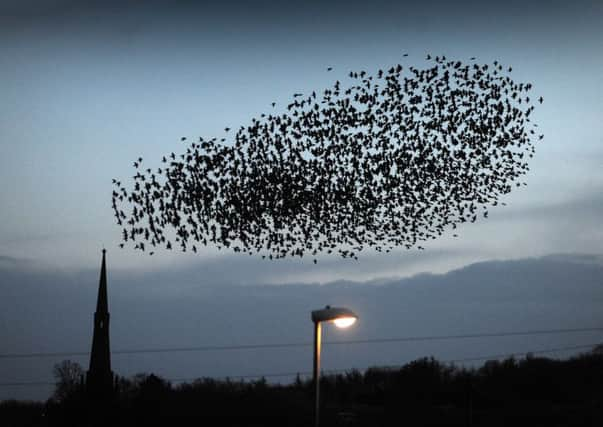Birdwatch: A spectacle as the starlings are coming home to roost


At the weekend I watched a flock of several thousands over Swillington Ings near Leeds swooping and wheeling in perfect synchrony above the reedbeds before plunging down with a rustle of wings to roost.
For a while they jostled each other, chattering and whistling before, seemingly at a given signal, they fell silent.
Advertisement
Hide AdAdvertisement
Hide AdNumbers at the roosts start to build up about half an hour before sunset, from about 3.15pm, as smaller groups arrive from all directions to join the main flock, often splitting away and moving off to gather up stragglers before rejoining the main flock again.
It has been found that in most roosts the same birds return to the same spots each night after spending the day feeding in smaller groups often a considerable distance away.
There has been considerable research into why starlings gather in such huge numbers, certainly one reason must be security as many thousands of eyes make it impossible for a predator to make a surprise attack.
Starling numbers start to build up in late summer when our resident population is boosted by arrivals from northern Europe including Scandinavia, the Baltic States, the Low Countries, Germany, Poland and Russia, east to Moscow and beyond.
Advertisement
Hide AdAdvertisement
Hide AdAlthough these flocks are spectacular they are but a fraction of the roosts numbering hundreds of thousands that once darkened the evening skies over cities including Leeds and Bradford before plunging down to roost on building ledges and windowsills.
In this setting starlings were a serious problem with their nightly shower of droppings leaving a well whitened and strongly smelling scene behind them every morning.
Huge and often unsuccessful efforts were made to drive them away but a big decline in starling numbers both here and on the Continent means that these city roosts are largely a thing of the past.
Instead starling roosts can now be enjoyed in more rural settings such as Swillington Ings with no anti-social consequences.
Advertisement
Hide AdAdvertisement
Hide AdA roost of up to 17,000 starlings can be seen on the Old Moor reserve near Barnsley while there is another substantial roost of up to 20,000 at the Potteric Carr reserve, Doncaster.
More winter visitors have been arriving including scaup at a number of sites, a smew at the Watton reserve, East Yorkshire, long-tailed ducks at Rother Valley and Pugney’s country parks and Hornsea Mere and red-breasted merganser at Southfield reservoir.
In East Yorkshire sightings included a Pallas’s warbler in gardens along Seaside Road, Easington while a juvenile pallid harrier was seen again at Welwick salt marsh and hen harrier at Stone Creek on the Humber.
A great northern diver and black-necked grebe have been seen in Scarborough Harbour.